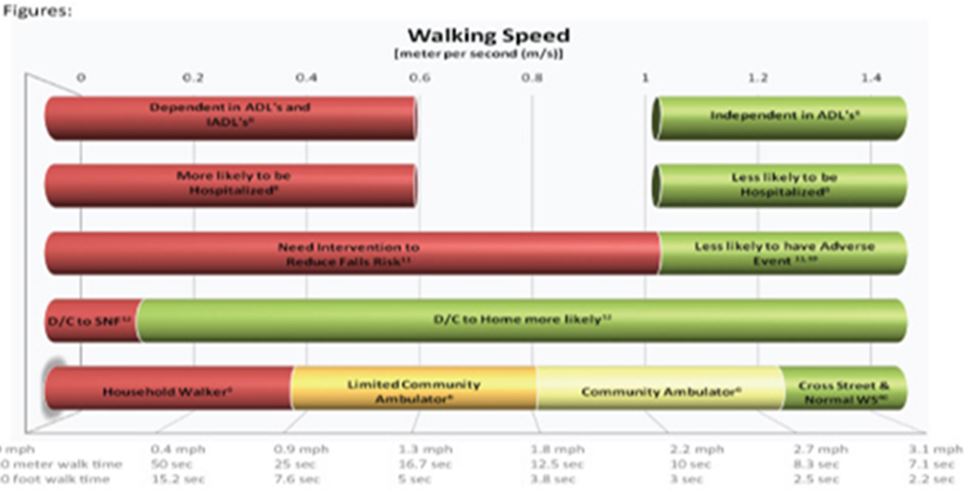The Relationship between Gait Speed and Overall Health

The assessment of gait is a common practice in a Physical Therapy clinic. From an individual’s abnormal gait pattern, a health professional can determine muscle weakness, impaired proprioception, balance or gait issues involved with a disease, and changes in somatosensory function. Gait and balance abnormalities occur in 14% of individuals over the age of 65 and in 50% of individuals over the age of 85. In addition, a person’s gait speed can be indicative of an individual’s well-being and good assessment for safety/fall risk. Three tests that may be used to assess an individual would be finding overall speed, the 10 meter walk test, and the 10 foot walk test. In these tests, certain gait speeds/times denote either that an individual can function independently or is dependent on another individual and requires help when accomplishing several tasks. An important mark that should be a primary goal for all individuals should be at the 1 m/s mark. This walking speed is suggestive that is less likely to be hospitalized, can be independent of activities of daily living (ADLs), and is less likely to suffer a fall. Another important walking speed marks that should be primary goals for individuals to meet is the 1.2 m/s mark. The 1.2 m/s mark ensures that an individual function completely independent when traveling around the community. Furthermore, graphs and test like the ones explained above are used to raise awareness by Physical Therapist and Exercise Specialist to individuals that may not meet these requirements. This helps these individuals further understand their overall health and seek the appropriate actions to ensure their safety. If you would like to read more on this topic, check out this article titled “Self-selected gait speed: A critical clinical outcome”. —> Self Selected Gait Speed A Critical Clinical Outcome

Sources:
Abnormal Gait
White Paper: “Walking Speed: the Sixth Vital Sign” : Journal of Geriatric Physical Therapy. LWW. Accessed June 24, 2015.
By: Dan Hagan

